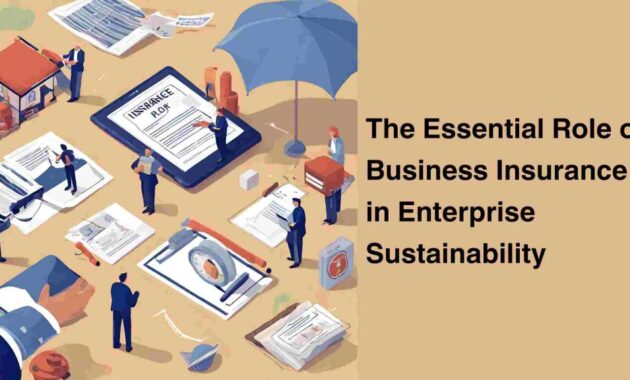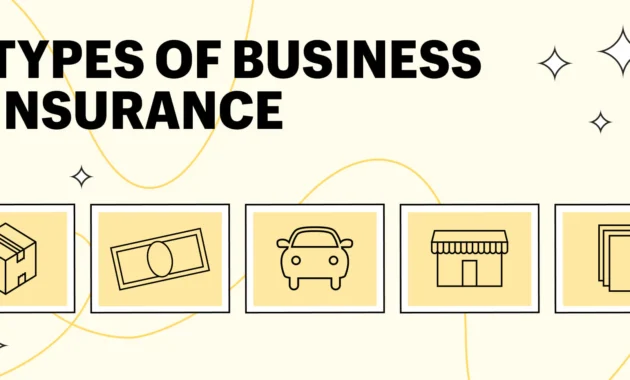Right Business Insurance Running a business comes with many risks—property damage, lawsuits, data breaches, employee injuries, and more. To protect your company and ensure long-term success, business insurance is essential. Choosing the right policy can be challenging, especially with so many coverage types available. This guide will help you understand what business insurance you need, how to evaluate options, and what factors to consider before buying.
Why Business Insurance Matters

Business insurance is more than just a formality. It provides a financial safety net against unexpected events that can disrupt operations or lead to significant losses.
Protects Against Legal Liability
A single lawsuit can cripple a business financially. Liability coverage ensures you’re not paying legal fees and settlements out of pocket.
Covers Property and Equipment Damage
Whether it’s fire, theft, or a natural disaster, property insurance covers damages to your building, inventory, and business assets.
Ensures Employee Protection
Workers’ compensation and employee liability insurance protect your staff and fulfill legal obligations.
Builds Credibility and Trust
Customers and partners often feel more comfortable working with insured businesses, especially in service-based industries.
Types of Business Insurance Coverage

General Liability Insurance
Protects your business from claims involving bodily injuries and property damage caused by your operations, products, or services.
What It Covers:
- Customer injuries on your property
- Third-party property damage
- Legal defense costs
Commercial Property Insurance
Covers the physical assets of your business, including buildings, equipment, and inventory.
What It Covers:
- Fire, vandalism, and natural disasters
- Theft and damage to property
- Business interruption in some policies
Workers’ Compensation Insurance
Required in most states, it covers medical expenses and lost wages for employees injured on the job.
Professional Liability Insurance (Errors and Omissions)
Important for service-based industries. It covers claims of negligence, mistakes, or failure to deliver promised services.
Business Owner’s Policy (BOP)
Combines general liability and property insurance into one package. It’s cost-effective and ideal for small to mid-sized businesses.
Cyber Liability Insurance
With the rise in cyber threats, this coverage protects businesses from data breaches, ransomware attacks, and loss of customer data.
Commercial Auto Insurance
Covers vehicles owned or used by your business for transportation, delivery, or service.
Product Liability Insurance
For manufacturers and retailers, this covers claims related to defective or harmful products.
Business Interruption Insurance
Provides income replacement if your business is temporarily shut down due to a covered event.
How to Assess Your Business Insurance Needs

Evaluate the Nature of Your Business
Different industries face different risks. A construction company will need more extensive liability and workers’ comp coverage than an online retailer.
Identify State and Industry Requirements
Certain types of insurance, like workers’ compensation or professional liability, may be legally required depending on your location and industry.
Consider the Size and Scope of Your Business
Larger businesses with more employees, locations, or vehicles may require more comprehensive policies.
Understand Potential Risks
Perform a risk assessment to determine where your business is most vulnerable. This helps you prioritize coverage.
Steps to Choose the Right Business Insurance
Step 1: Analyze Your Risks
Identify potential exposures—such as physical risks, financial liability, and cyber threats—to understand what insurance is necessary.
Step 2: Research Available Policies
Look into various insurance providers and types of coverage. Compare policy limits, exclusions, premiums, and deductibles.
Step 3: Get Multiple Quotes
Always get at least three quotes from reputable insurers to find the best value for your needs.
Step 4: Work with an Insurance Broker
Brokers can help assess your business needs and find tailored policies across multiple providers. They can also negotiate better deals on your behalf.
Step 5: Review Terms Carefully
Read the fine print, understand the coverage limitations, and ask about exclusions that might affect your business operations.
Step 6: Update Coverage Regularly
As your business grows or changes, your insurance needs will evolve. Review your policy annually to ensure it remains adequate.
Factors That Affect Business Insurance Costs

Industry Risk Level
High-risk industries like construction or manufacturing generally have higher premiums than low-risk sectors like consulting.
Business Location
Location impacts cost due to crime rates, weather risks, and state insurance laws.
Revenue and Payroll Size
Higher revenues and larger payrolls typically mean higher coverage limits and premiums.
Claims History
Businesses with a history of frequent claims may face higher rates or difficulty securing coverage.
Number of Employees
More employees mean greater risk and the need for broader coverage.
Common Mistakes to Avoid
Underinsuring Your Business
Choosing minimal coverage to save money can leave you vulnerable to massive losses during a major incident.
Ignoring Policy Exclusions
Make sure you understand what’s not covered to avoid surprises when filing a claim.
Not Bundling Policies
Bundling with one provider often leads to discounts and simplifies your insurance management.
Failing to Review Annually
Business dynamics change—don’t stick with outdated policies that no longer serve your needs.
When to File a Claim
After Property Damage
Whether it’s due to natural disasters, theft, or vandalism, report it as soon as possible.
Following a Lawsuit or Legal Threat
Immediately notify your insurer if you’re being sued or facing a legal dispute.
After Employee Injuries
In the case of workplace injuries, report the incident and provide necessary documentation to your insurer.
Working with an Insurance Broker vs. Agent
Insurance Broker
Independent professionals who work with multiple insurance companies to find the best policy for you.
Pros:
- Offers a variety of choices
- Helps tailor coverage
- Can negotiate rates
Insurance Agent
Usually works with one insurance company and offers policies from that provider.
Pros:
- In-depth knowledge of specific products
- Easier to build a long-term relationship
Also Read : The Future Of Pet Insurance: Trends And Innovations In Pet Healthcare
Conclusion
Choosing the right business insurance is essential to safeguarding your company’s future. With the right coverage, you can protect your property, finances, employees, and reputation. The key is to understand your business’s unique risks and shop around for tailored policies that offer adequate protection.
Business insurance is not just a legal or financial safeguard—it’s an investment in your company’s long-term sustainability and peace of mind. Take the time to research, compare, and consult with professionals before making a decision. The more informed you are, the better equipped you’ll be to choose the right insurance coverage for your company.
FAQs
What types of business insurance are legally required?
Most states require workers’ compensation and unemployment insurance if you have employees. Some industries may also require professional liability or commercial auto insurance.
How much does business insurance typically cost?
Costs vary based on business size, industry, and location. On average, small businesses might pay between $500 to $3,000 per year per policy.
Can I combine multiple types of insurance?
Yes, many providers offer Business Owner’s Policies (BOP) that combine general liability and property insurance, often at a lower cost than purchasing separately.
What happens if I don’t have business insurance?
Without insurance, you’re financially liable for damages, lawsuits, and employee injuries. This can lead to bankruptcy or business closure in the event of a major incident.
How often should I review my business insurance policy?
You should review your policy annually or after any major changes to your business such as expansion, hiring new employees, or purchasing new equipment.




